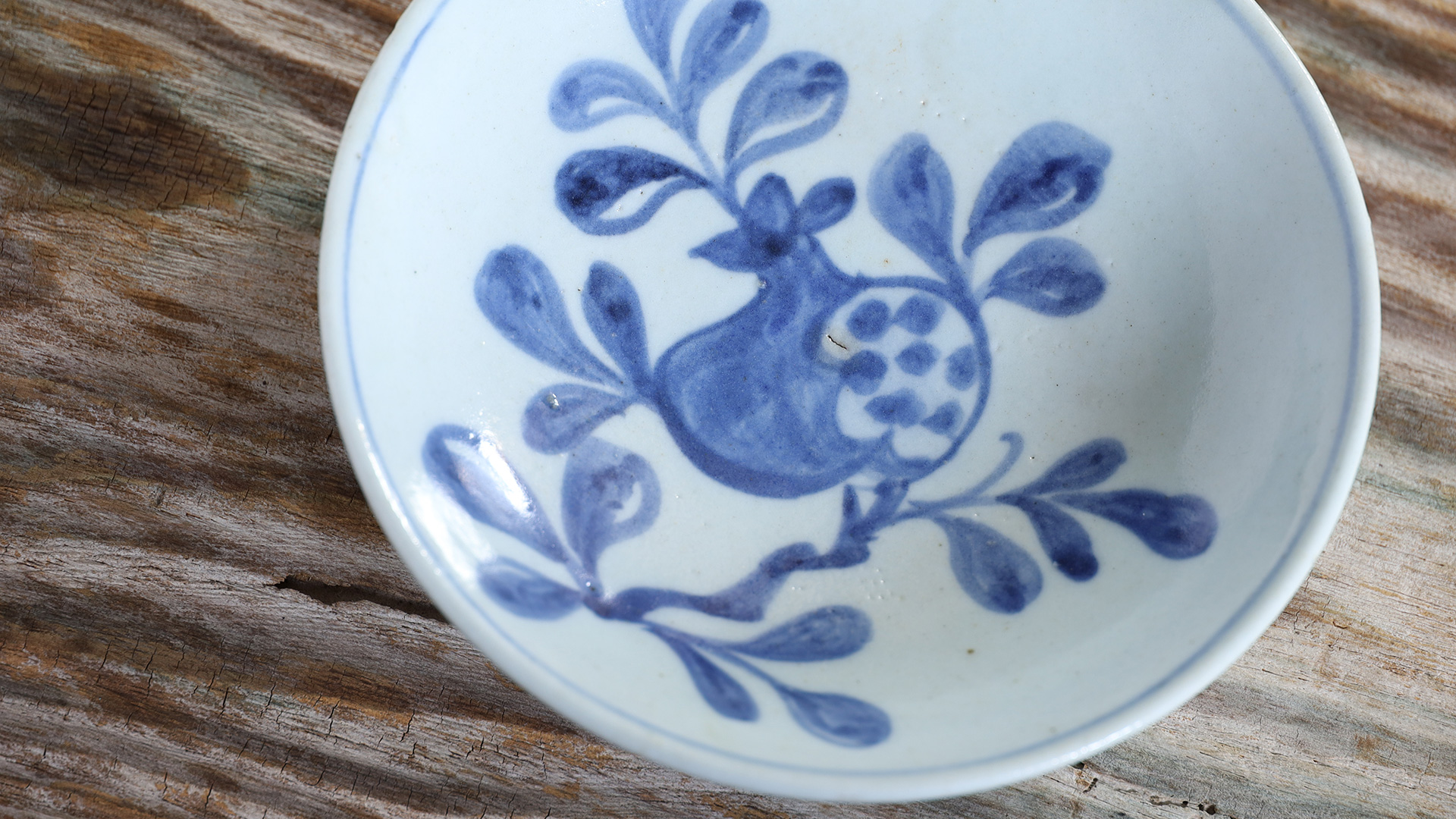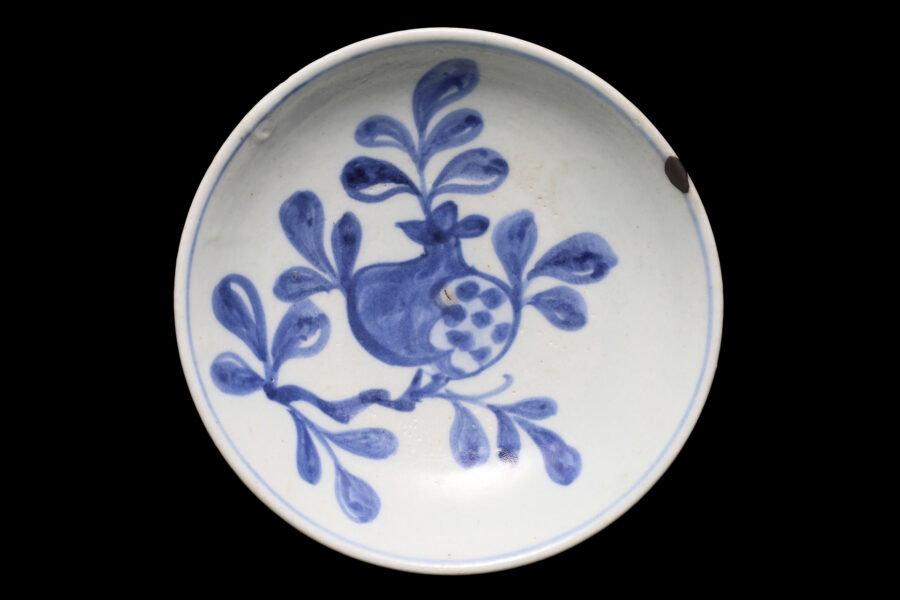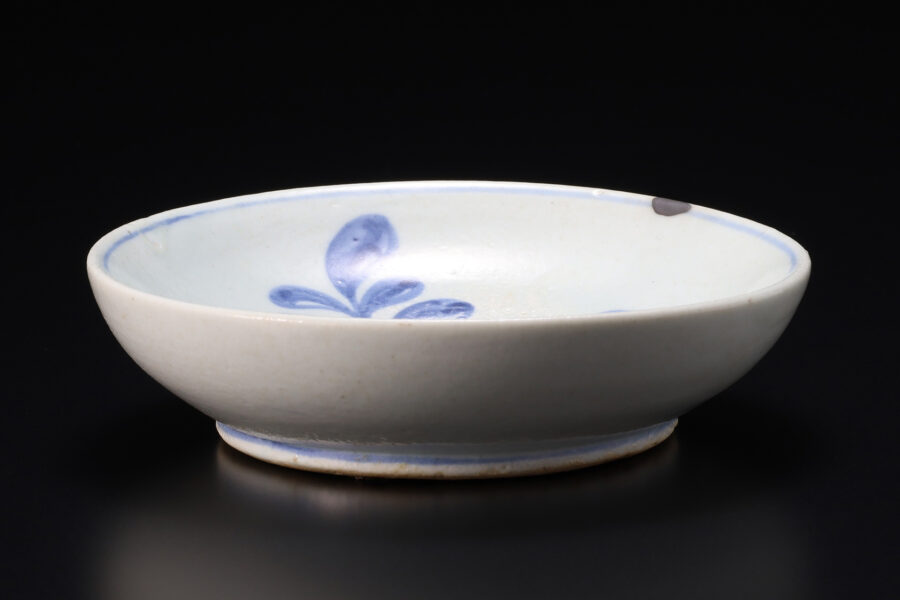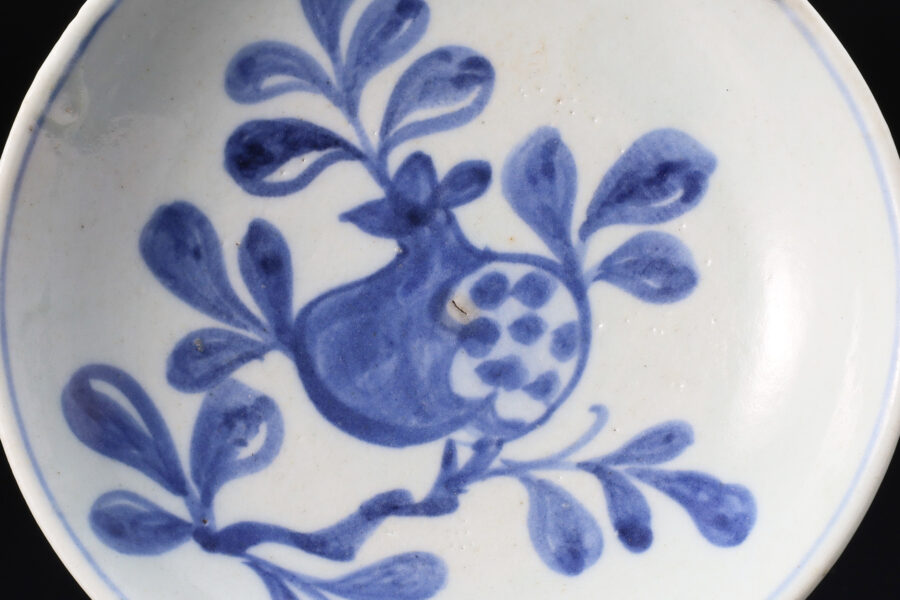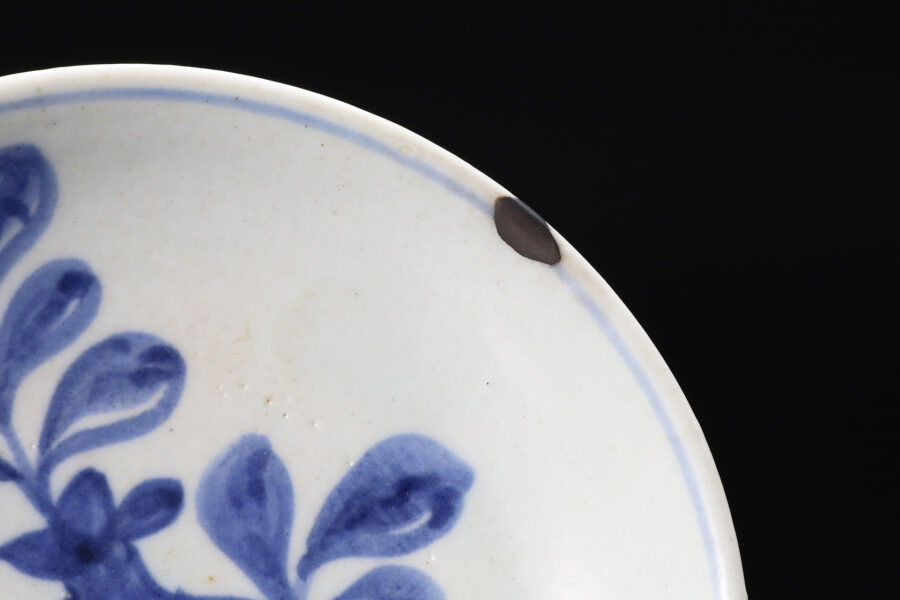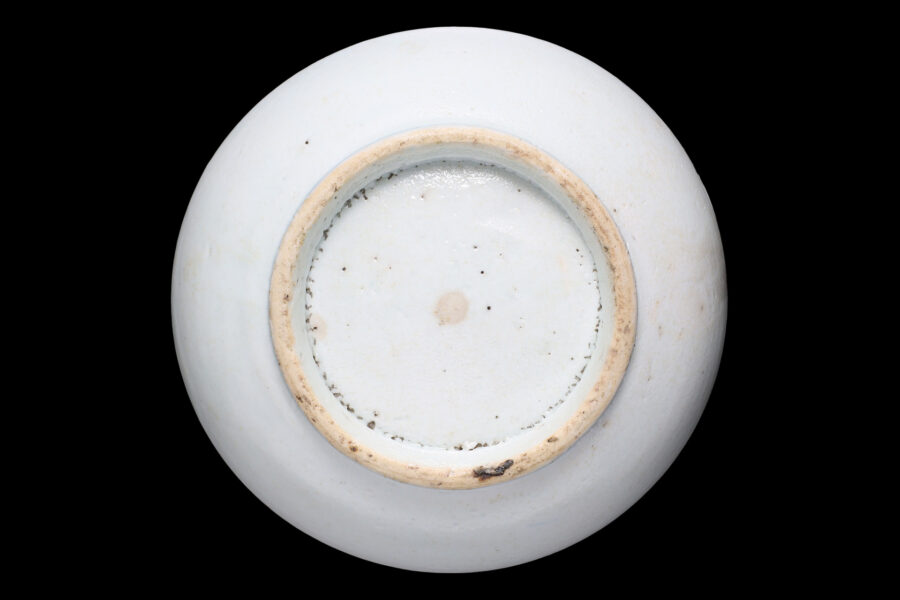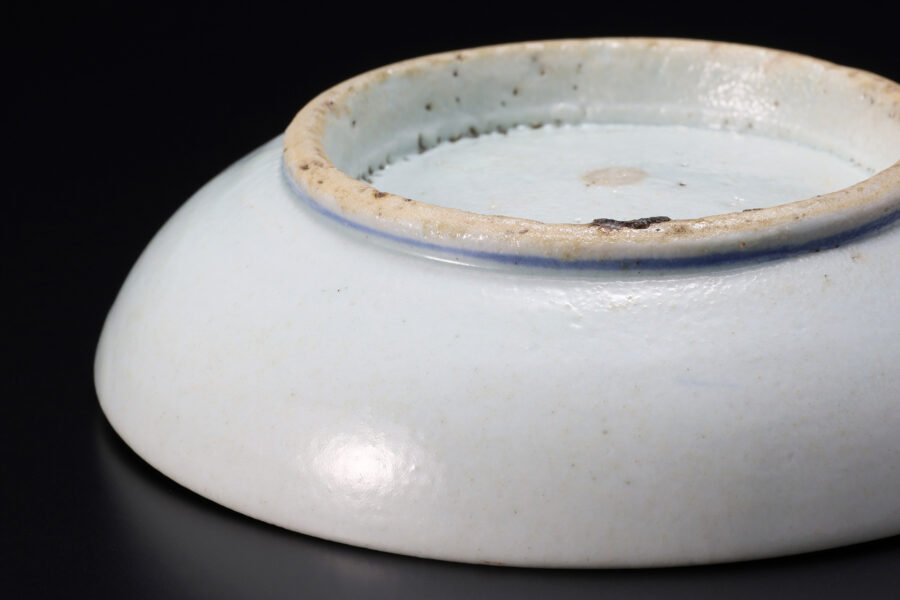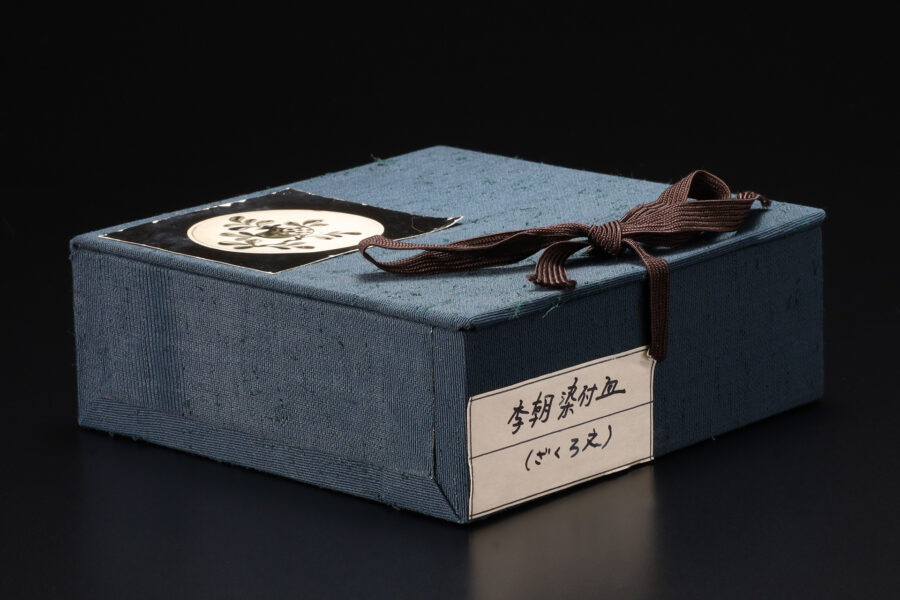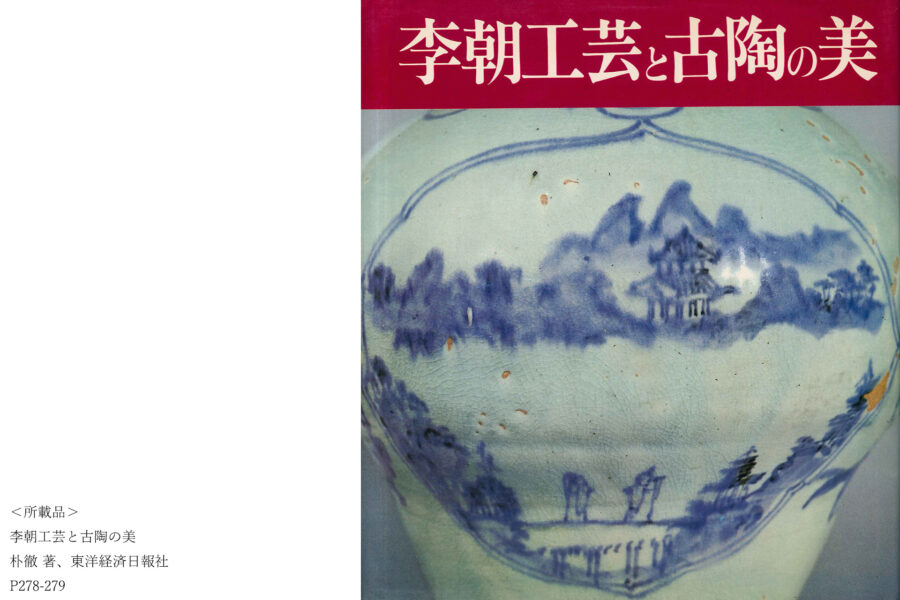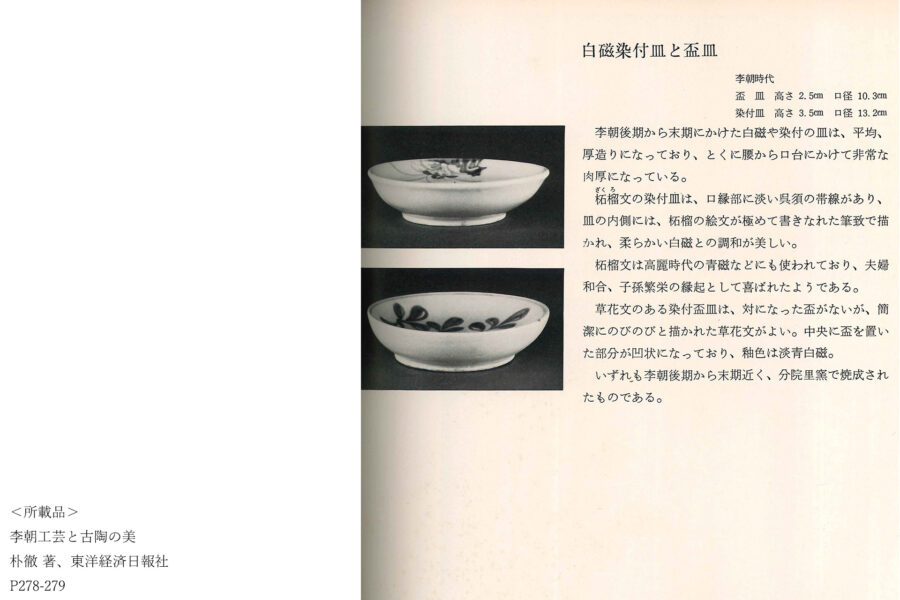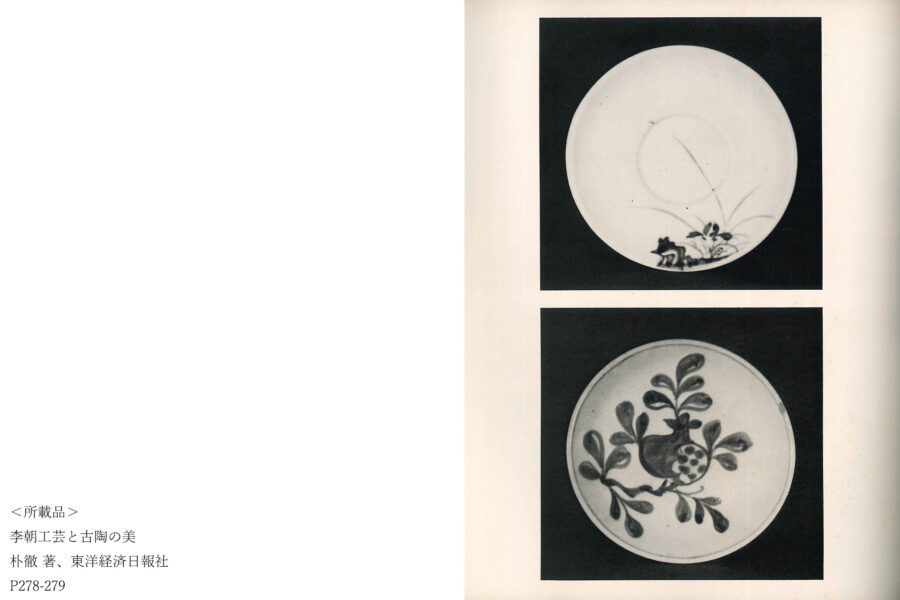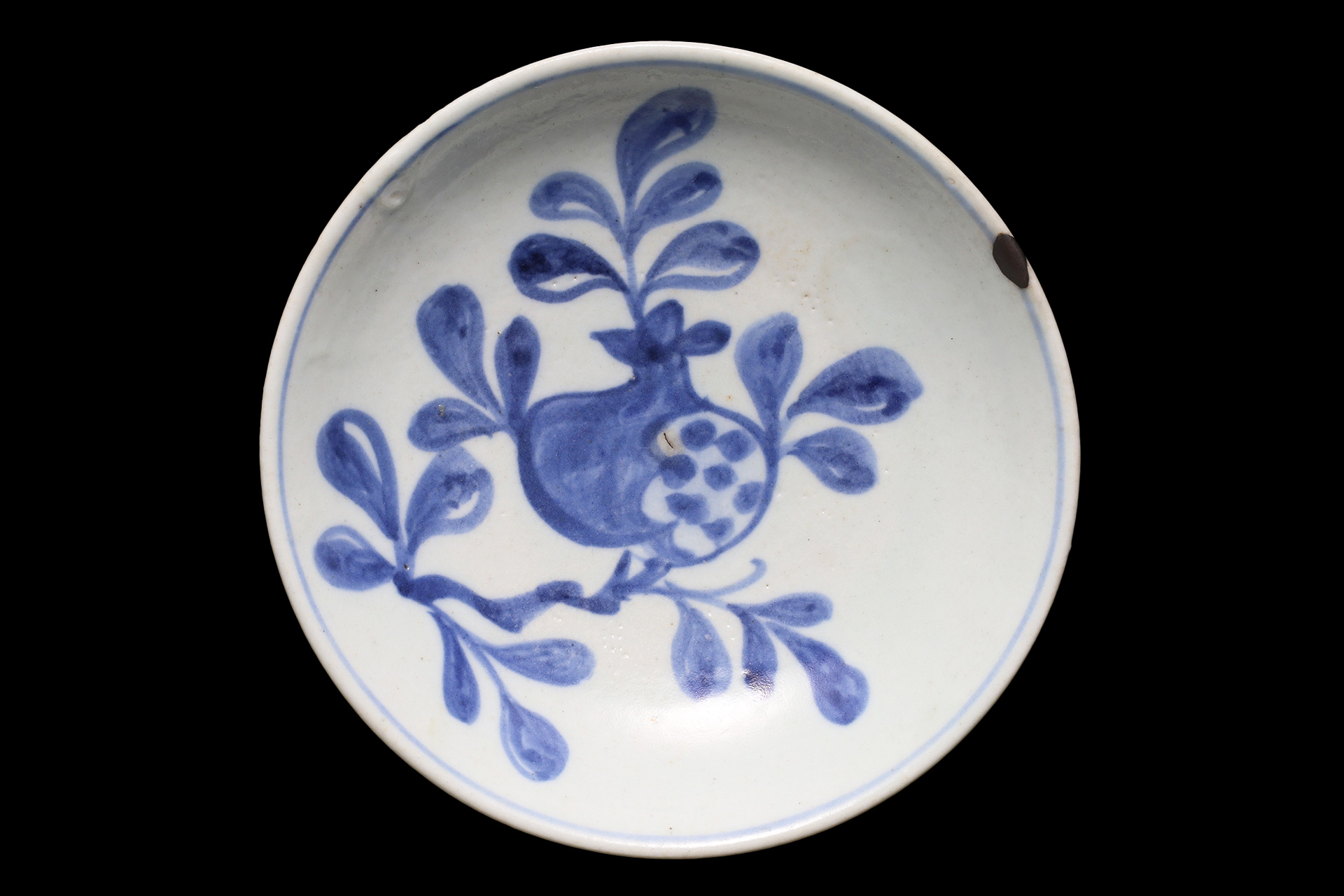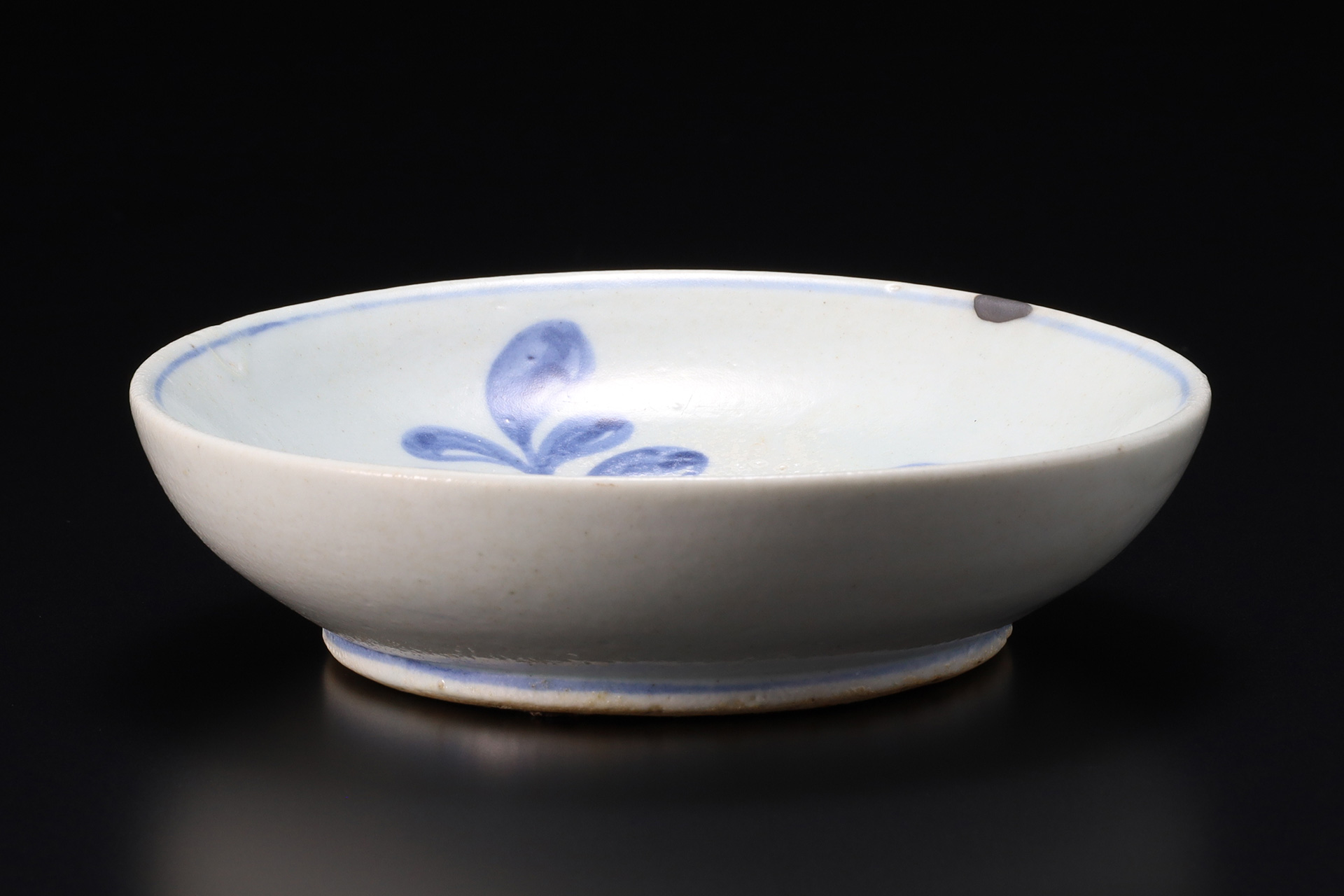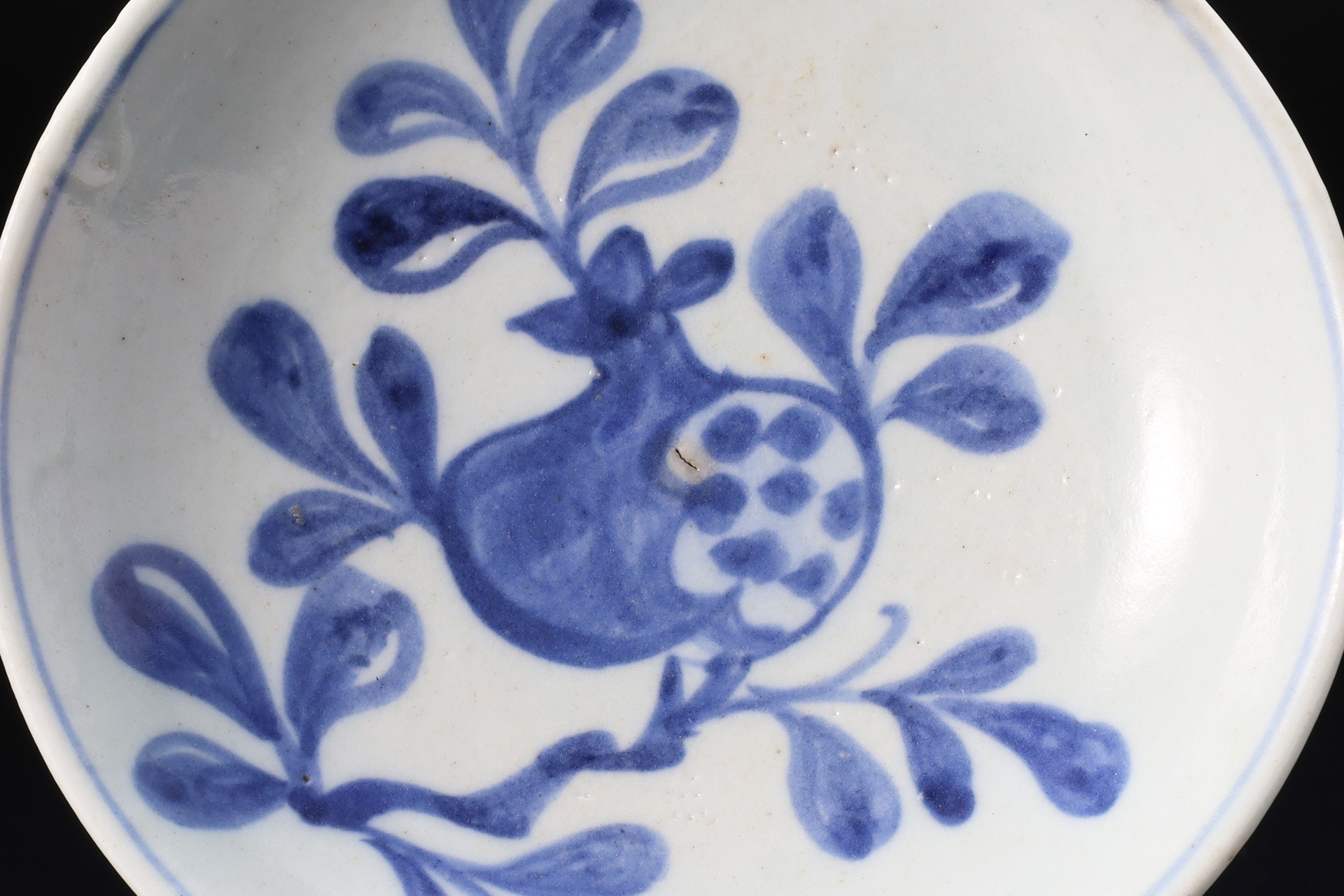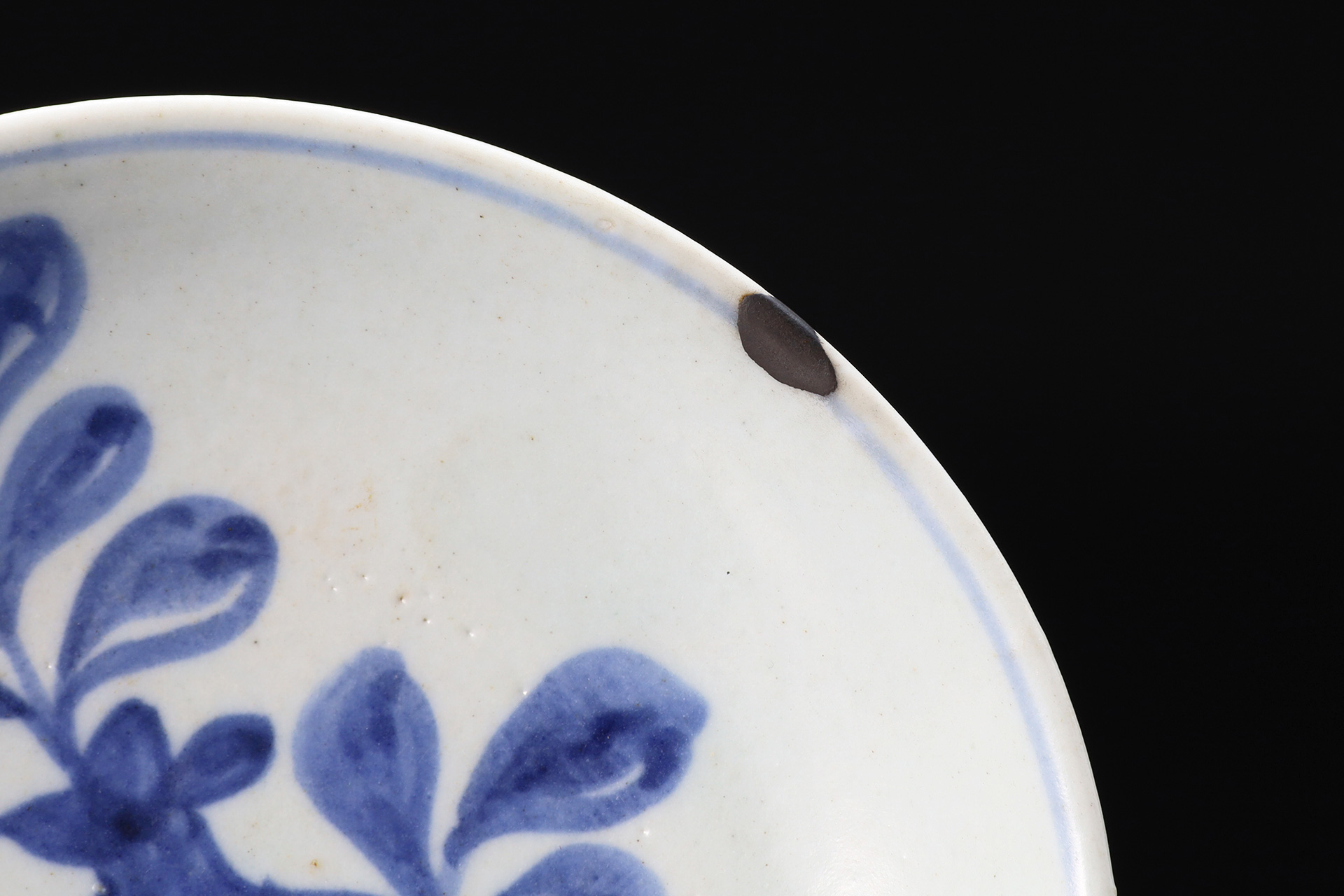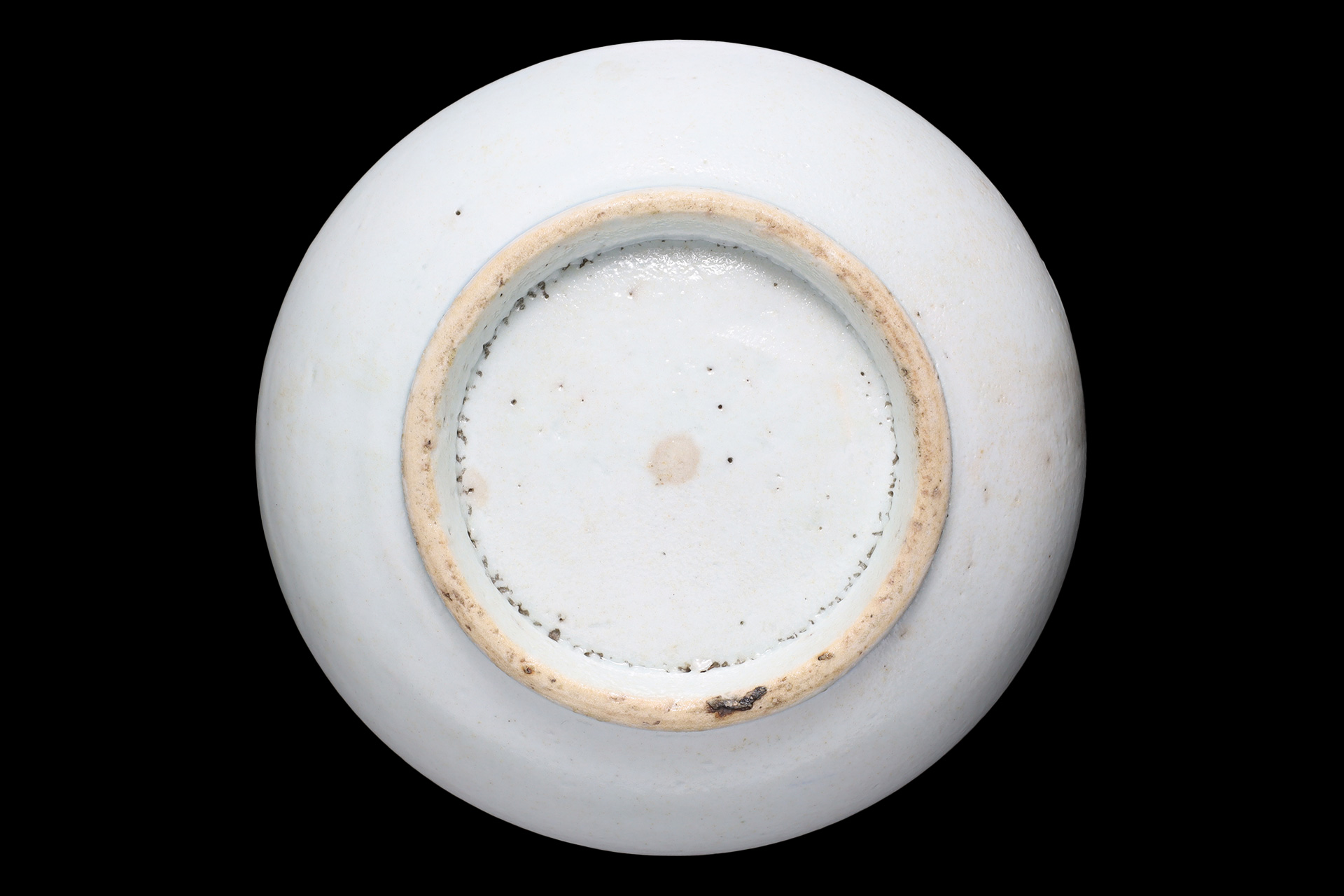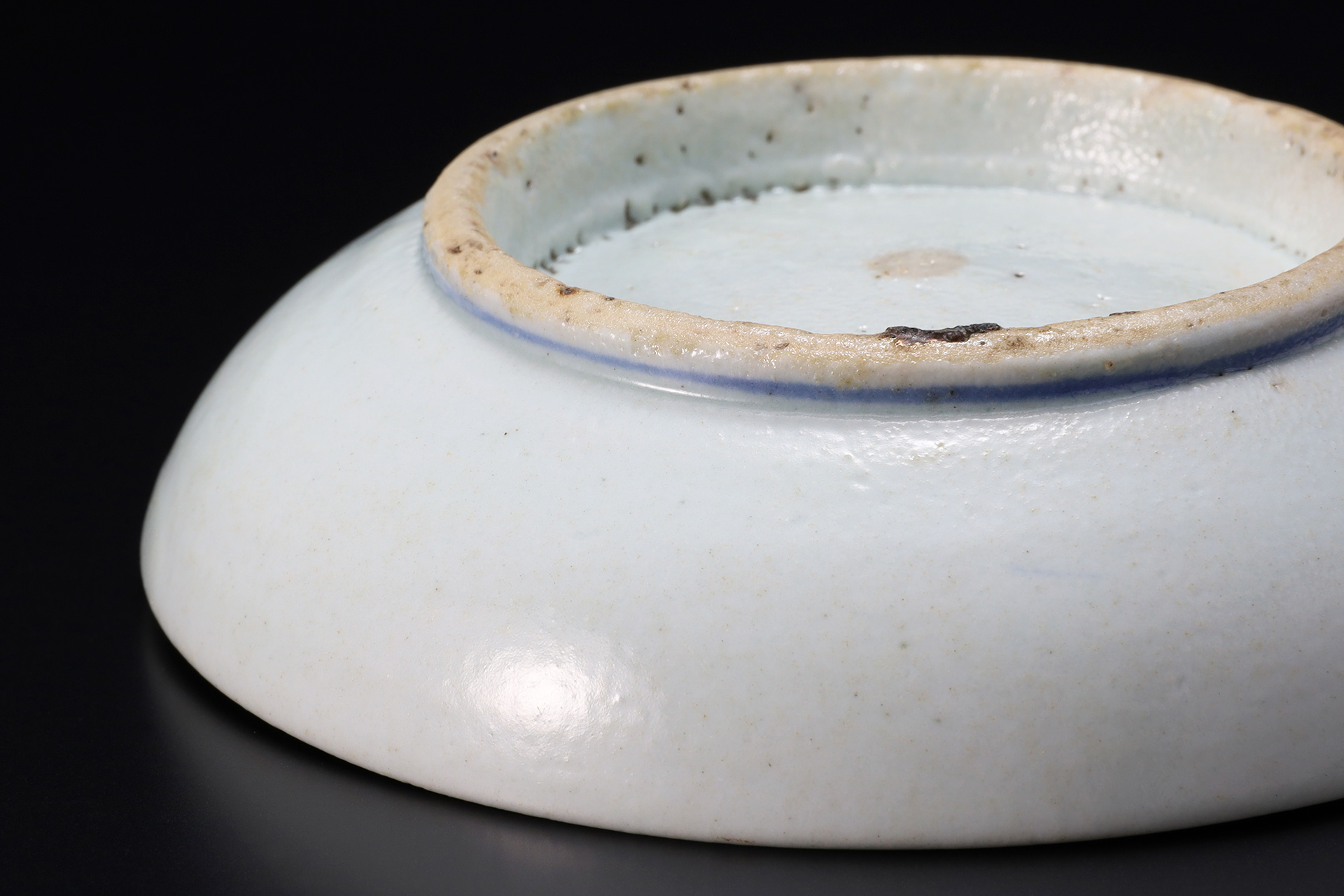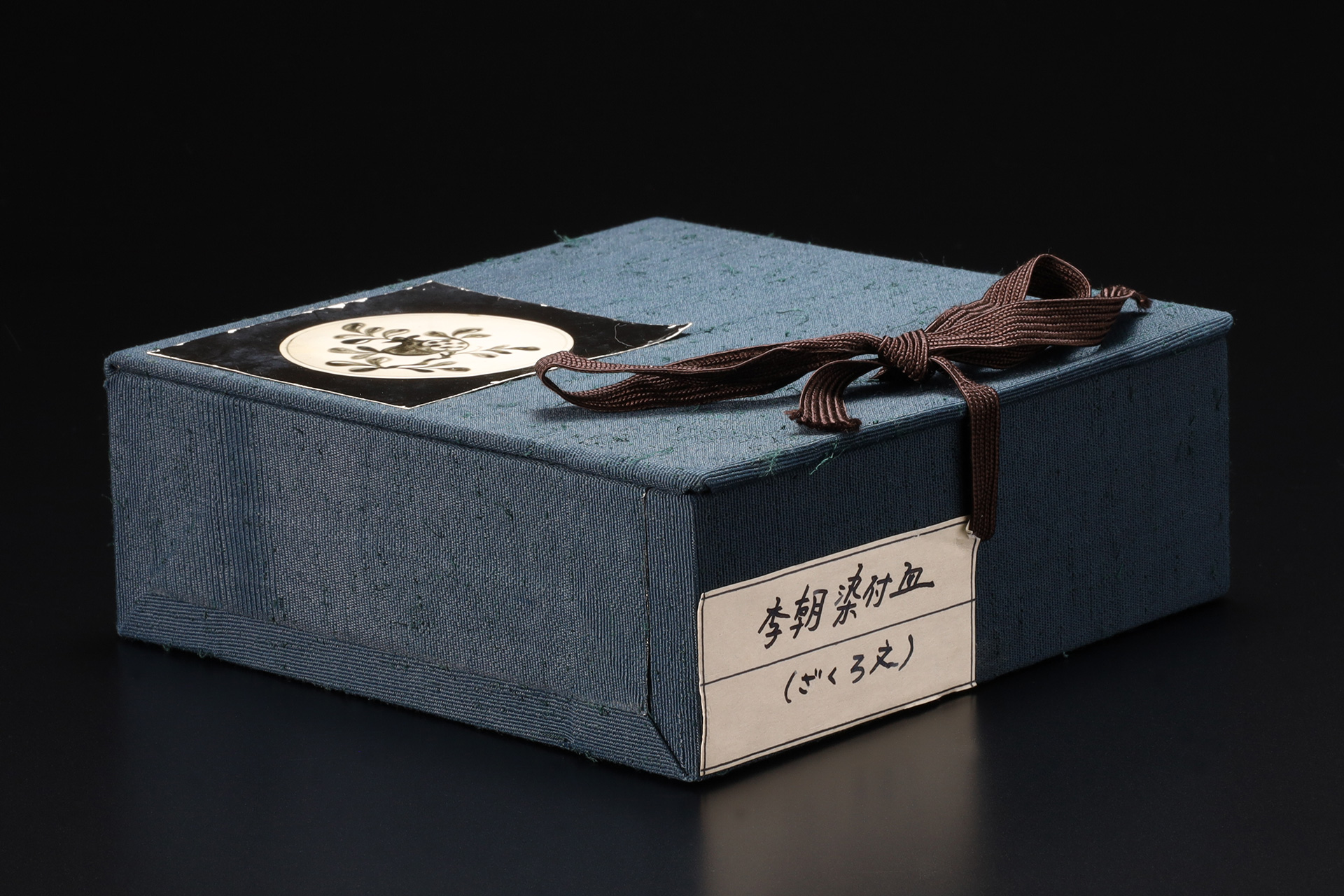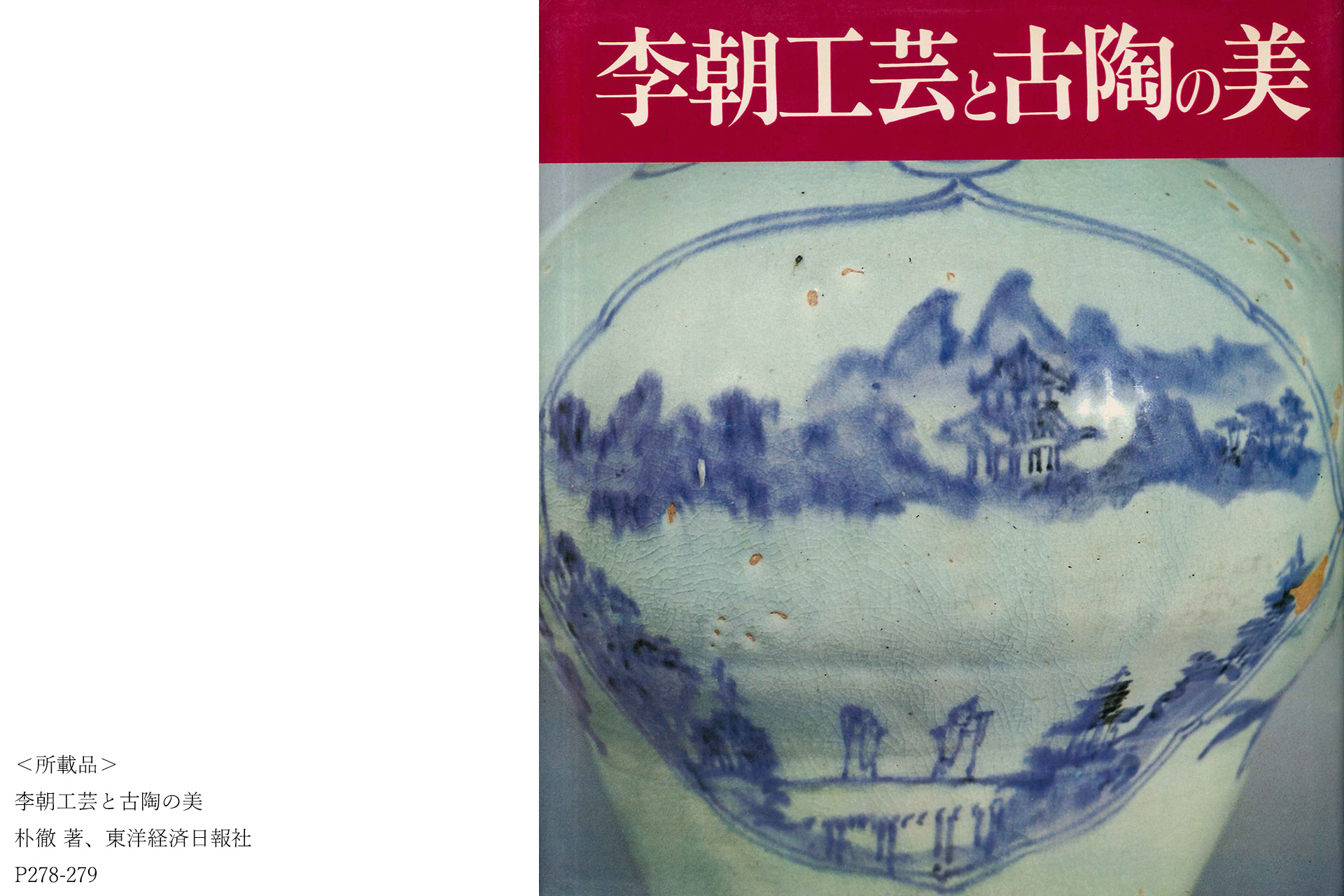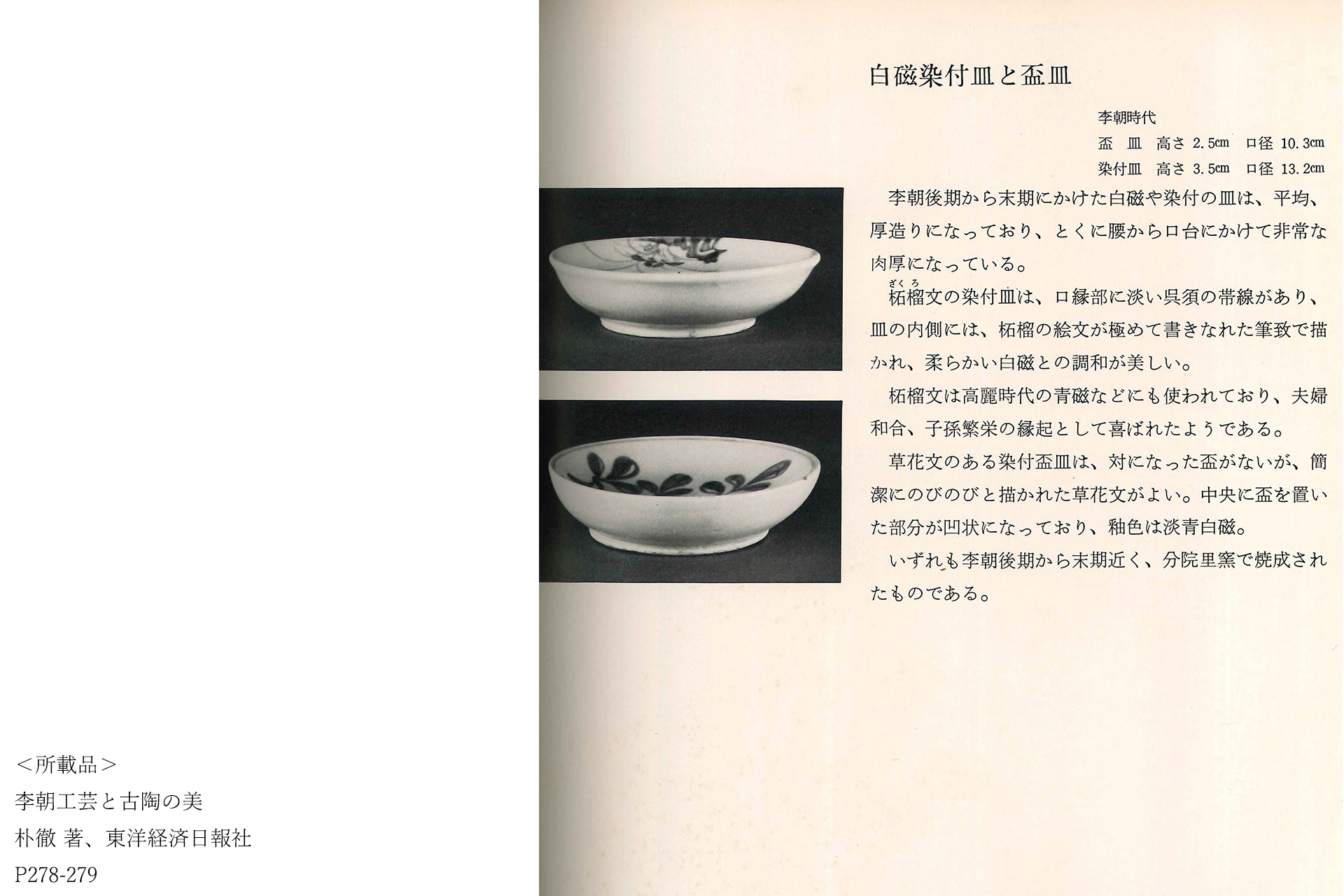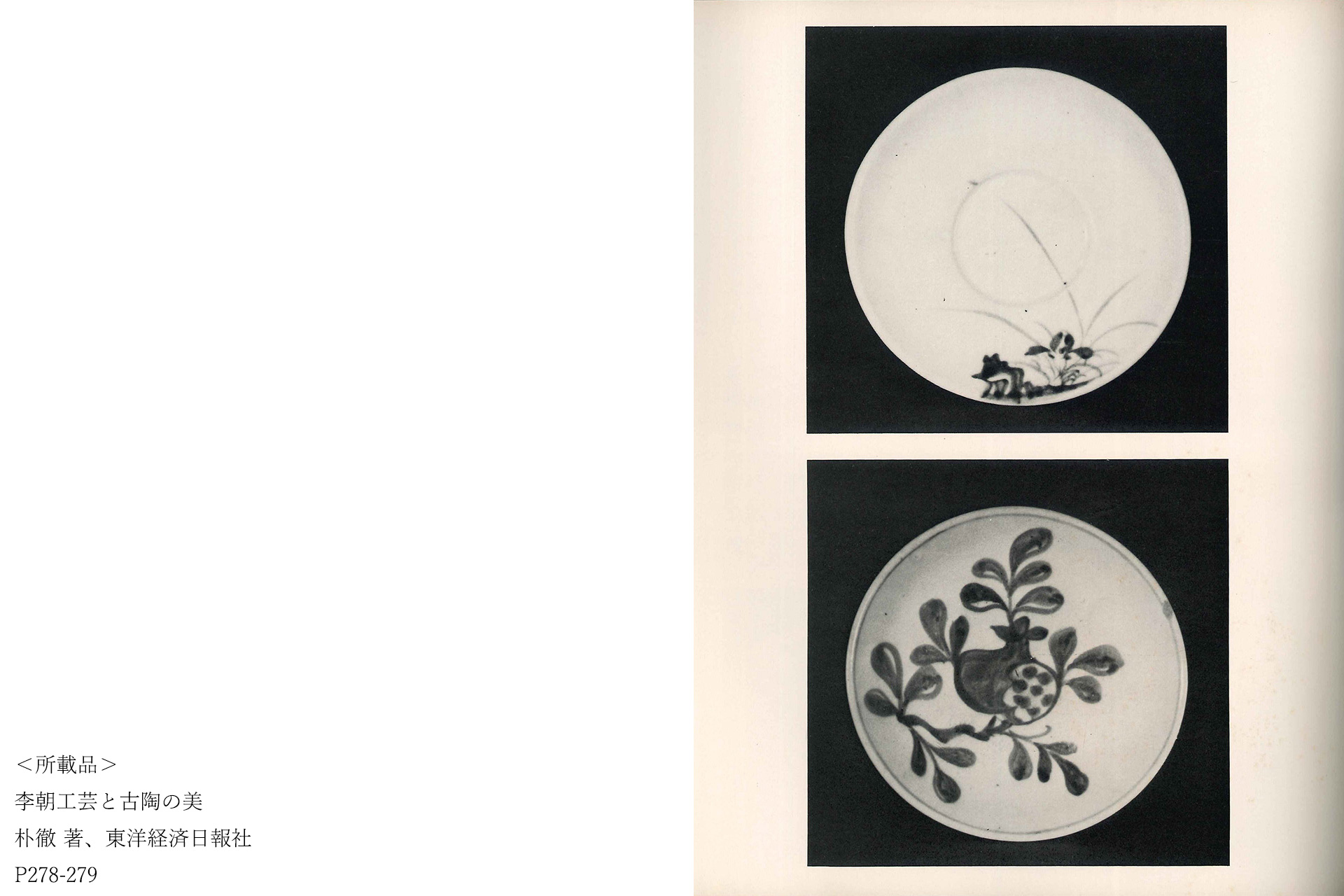This is the excellent work from the late joseon dynasty, featuring a pomegranate design, which symbolizes fertility. It is the thick, sturdy dish, heavy, with a deeply hollowed base and the glaze on the bottom has been carefully wiped off. The vivid blue-and-white highlights the slightly bluish base, and although it is the small work, it conveys the charm of punwon-kiln to the fullest. The dishes are believed to have been in demand among royalty, high ranking officials, and the wealthy, and only a few remain. This work is included in "The Beauty of Yi Dynasty Crafts and Ancient Pottery".
Inquiry
- Product Code
- 231213-4
- Period
- Joseon Dynasty
19th century
- Weight
- 295g
- Diameter
- 13.3cm
- Height
- 3.5cm
- Bottom Diameter
- 8.5cm
- Description
- The Box
Acrylic Dish Stand
- Provenance
- 「The Beauty of Yi Dynasty Crafts and Ancient Pottery」, Toyo Keizai Daily Company, P278-279, Published Work(*With Published Book)
- Condition
- There is a silver repair at the edge
It meets the requirements of the excellent work with its beautiful base, ideal blue-and-white, and excellent firing.
In 1752, the last imperial-kiln of the joseon dynasty was moved to punwon-kiln.
The period from then until 1883 when punwon-kiln was transferred from official control to private control is considered the late joseon dynasty.
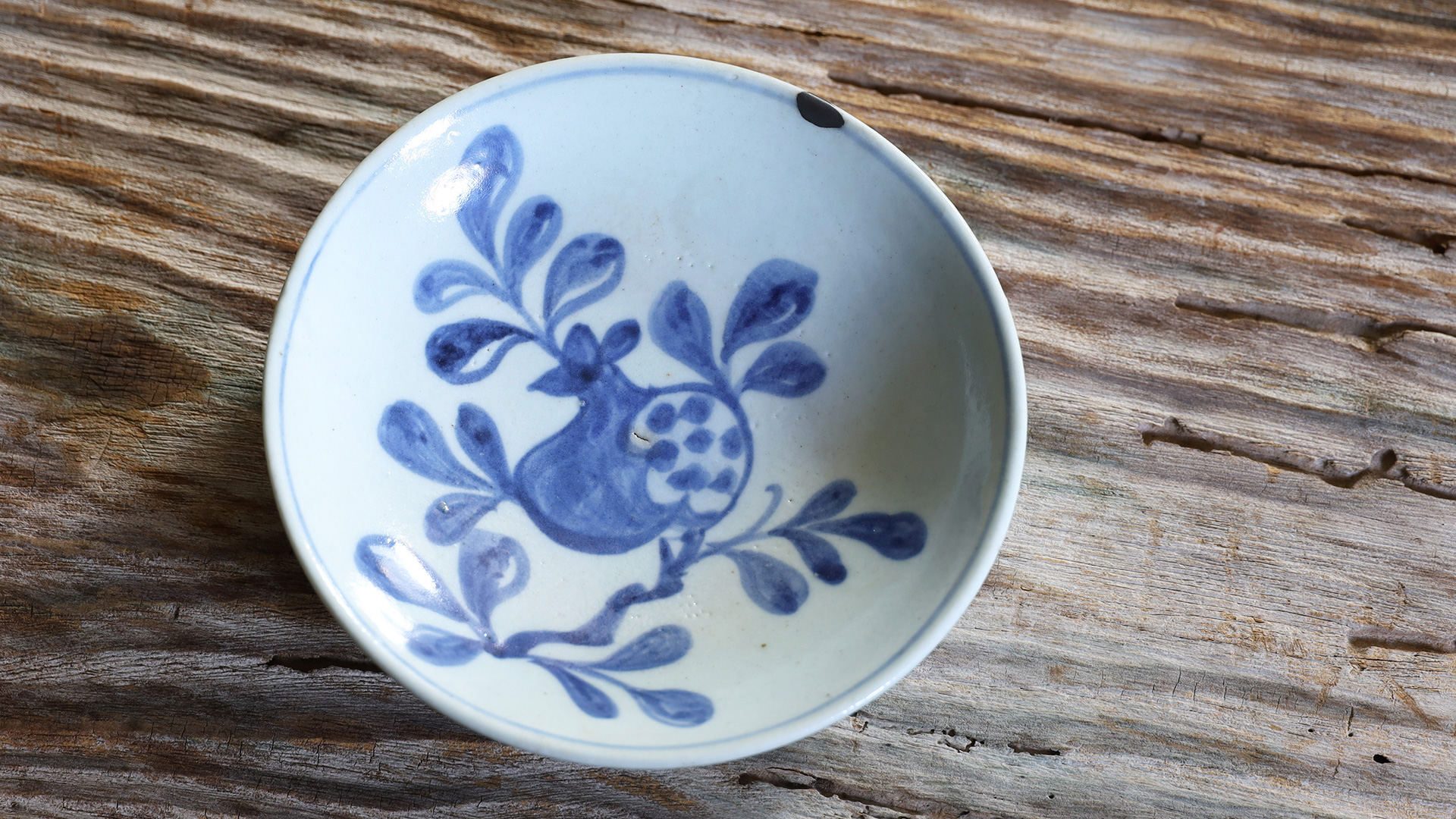
The pomegranate was introduced to japan during the heian period as fruit trees and ornamentals.
It is an auspicious design that means abundance of children, and in japan it is also considered an auspicious fruit as a symbol of Kishimojin.
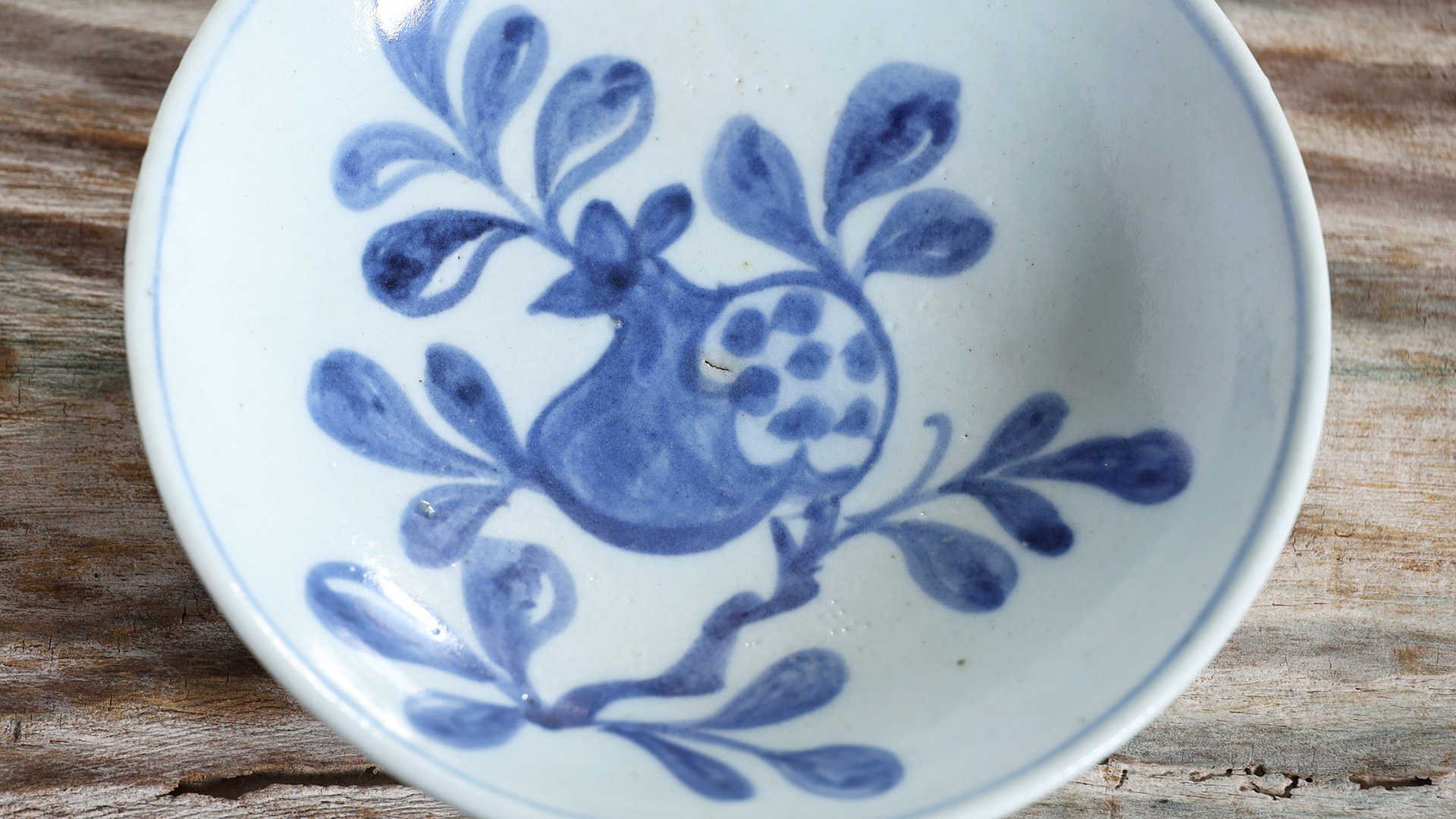
Joseon dishes are rare, and most that remain belong to the late joseon dynasty.
Characteristics also appear in the deeply hollowed out bottom.
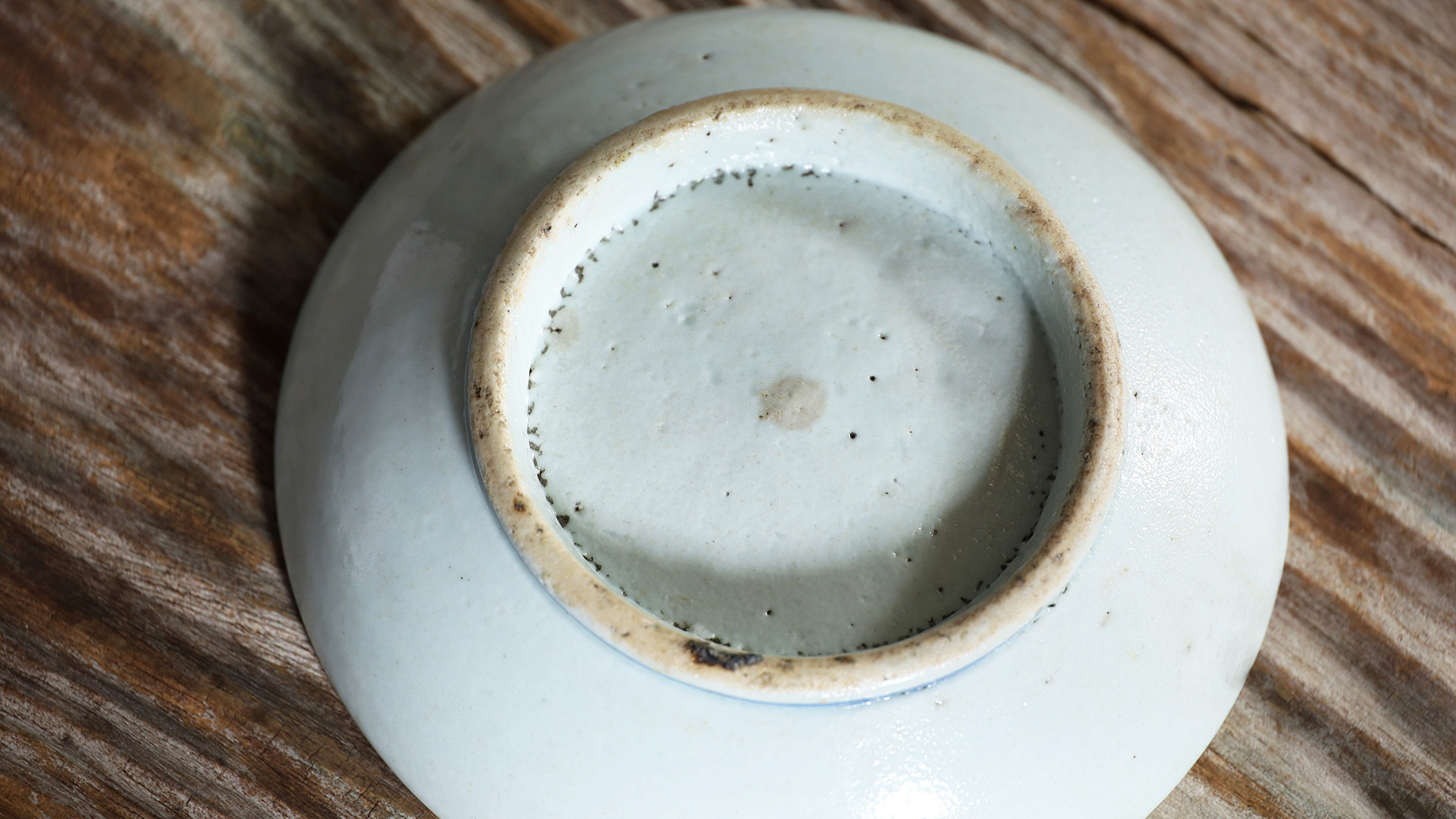
This work is included in “The Beauty of Yi Dynasty Crafts and Ancient Pottery”.
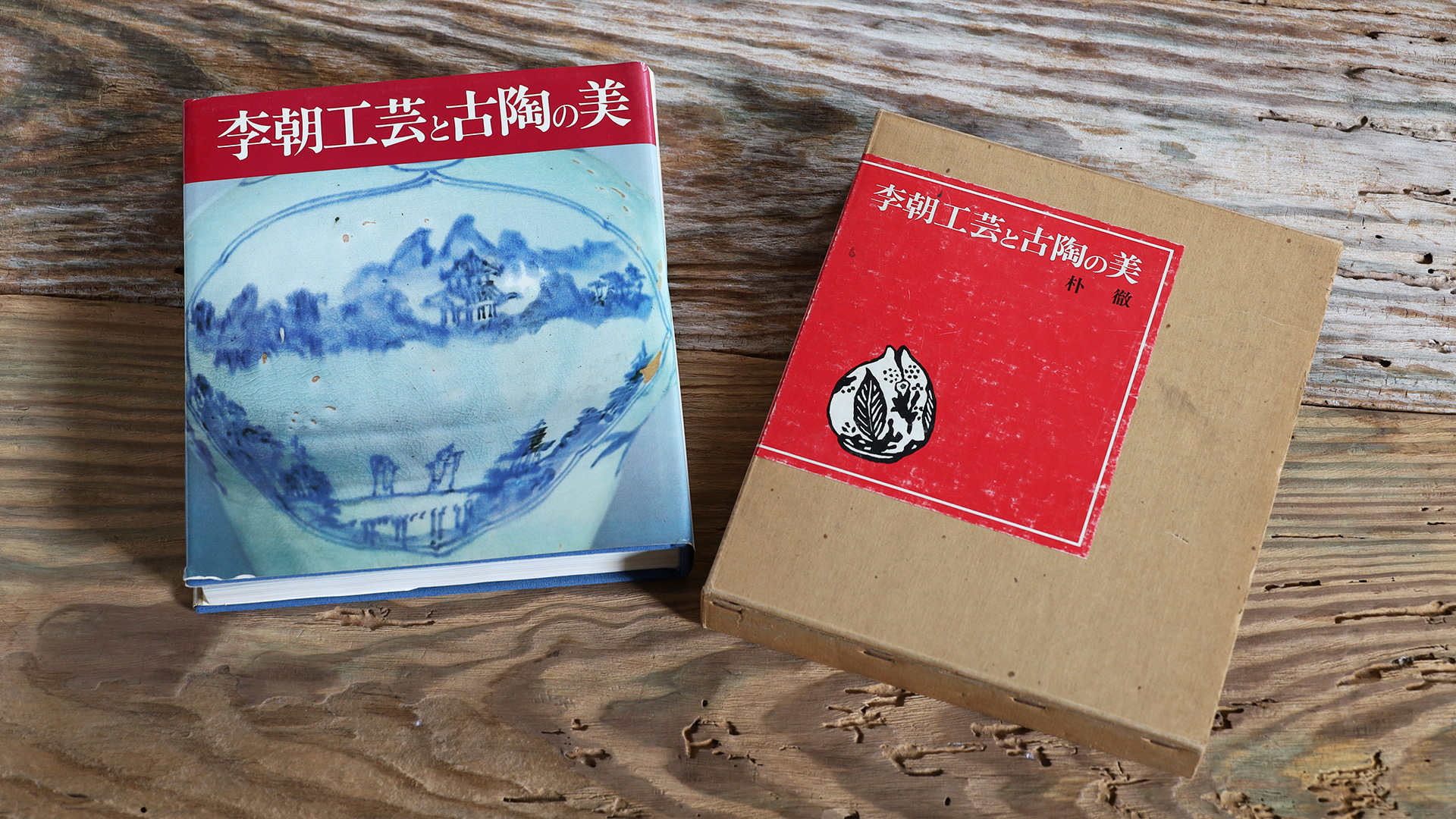
李朝
李氏朝鮮とは1392年に李成桂が朝鮮半島に建国した朝鮮最後の統一王朝です。
国号は李成桂が明国王に認知を求め、1393年に採択した経緯があります。
「李朝」の呼称は日本において定着し、長く用いられています。
高麗時代の仏教が衰え、抑仏崇儒政策が推し進められると、
儒教の精神は人々の生活の規範として深く浸透し、
清廉潔白を崇め、醇朴で倹素な気風を養う事が理念とされました。
儒教の普及と共に祭祀も宮廷から一般庶民に至るまで盛大に行われ、
「白」は神聖と簡素を旨とする清浄無垢な色として祭器においても白磁が珍重されました。
白磁を母体に染付、鉄砂、辰砂等の装飾が生まれていきますが、
節用を重んじた体制下では最後まで色絵が焼成される事はありませんでした。
日清戦争(1894~1895)後の1897年に国号を「大韓」と改称しました。
日露戦争(1904~1905)後は日本の保護国となり、1910年の韓国併合で滅亡しました。
李朝陶磁への深い理解と愛情を持ち、社会的に広く認識させる力を発揮したのは、
浅川伯教と巧の兄弟であり、その兄弟の手引きによって心を傾けていったのは柳宗悦でした。
https://tenpyodo.com/dictionaries/korea/
李朝後期 18世紀後半(1752年)~19世紀
1752年に李朝最後の官窯は金沙里から分院里に移設されました。
以後、1883年に分院里窯が官窯から民窯に移管されるまでを李朝後期と区分します。
広州の様々な地点に位置してきた官窯の中で最も漢江に近い地点に設置されたのは、
資材や製品の運搬の利が考慮されたからに他なりません。
李朝後期は中国からコバルト顔料の輸入が潤沢になった事で染付の生産が隆盛しました。
時代が下がるに連れて次第に染付の発色は濃くなり、筆致は太くなっていきます。
文様においては十長生、蓮花、牡丹、鶴、蝙蝠、文字等の多様な文様が用いられました。
染付が増加する一方で鉄砂は目立って減少し、
鮮やかな紅色を呈した華やかな辰砂が台頭します。
分院里窯の初期には金沙里窯と区別の付かない位に優美な物もありますが、
時代が下がって国力が疲弊すると素地、成形、文様等は次第に俗悪化していきました。
官窯の固定による安定した制作環境は漢江という大水路に恵まれた結果でもありましたが、
同時に地元の資材調達だけでは需要に追い付けなくなった生産量の拡大を物語っています。
この頃の分院里窯は宮中御器の生産組織であったばかりではなく、
経済の発達に比例した旺盛な民間需要にも応えざるを得なくなっていました。
寧ろ、御器より一般顧客を対象にした需要を重要視されたとも云われています。
優れた技法で祭器や日用雑器に至る多種多様な器種を焼成しましたが、
中でも最も特徴を発揮しているのが水滴や筆筒を始めとした文房具です。
当時の文人達が競いあって買い求めた様子が文献や優れた遺例の多さからも窺えます。
器壁が厚くなった事から皿や壷では底部が内側に深く抉られた作品が多く見られます。
19世紀後半にはアメリカ、フランス、日本等の外国勢力の侵略もあって国政は乱れました。
1883年には遂に分院里窯も民営化され、約500年に亘った栄光の歴史を閉じました。
民営化された後(李朝末期)はより粗質化が進んで極度に堕落した様相を呈しています。
白磁は灰色を帯び、染付は発色が一層濃くなって紫色になった例が多いです。



